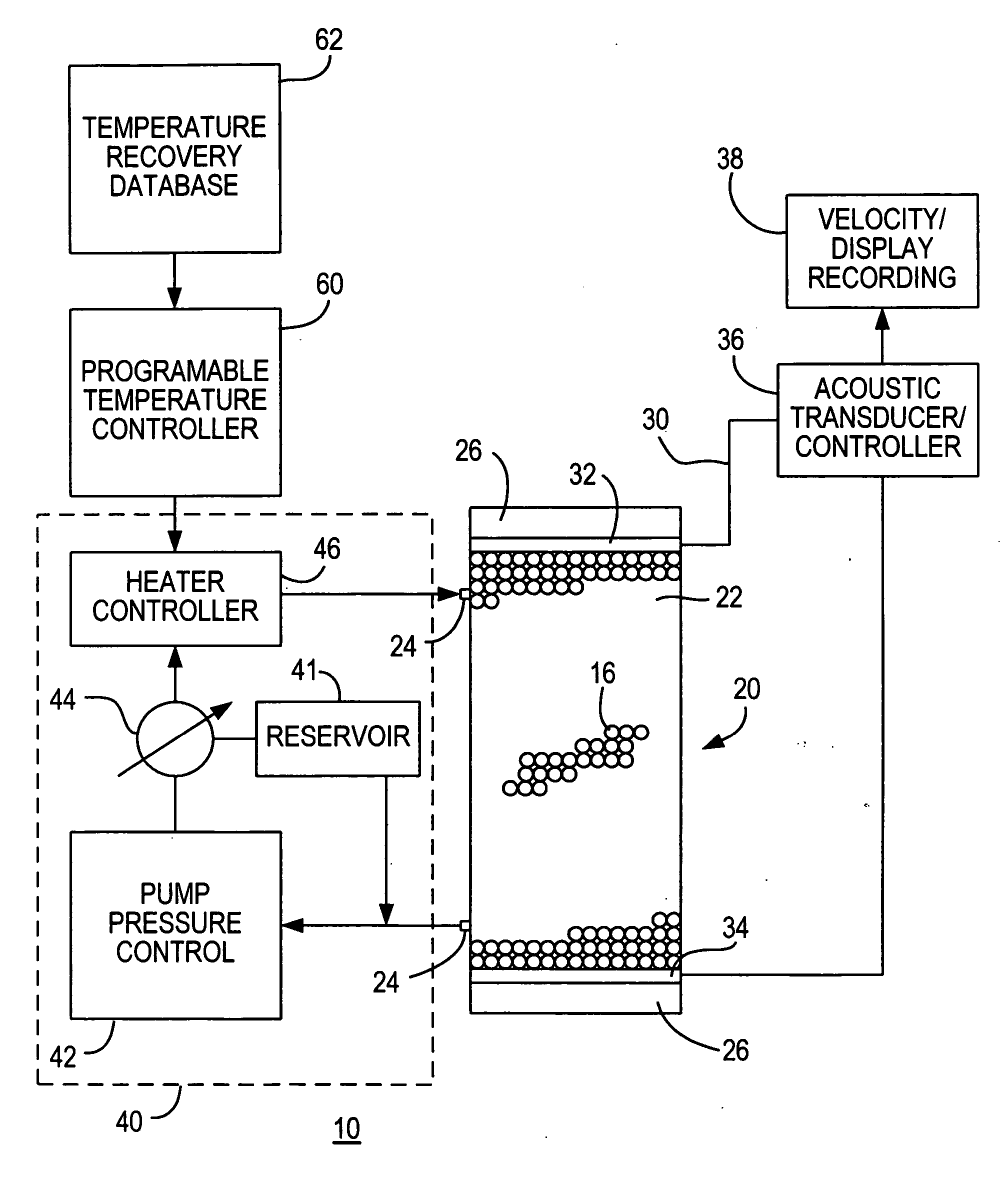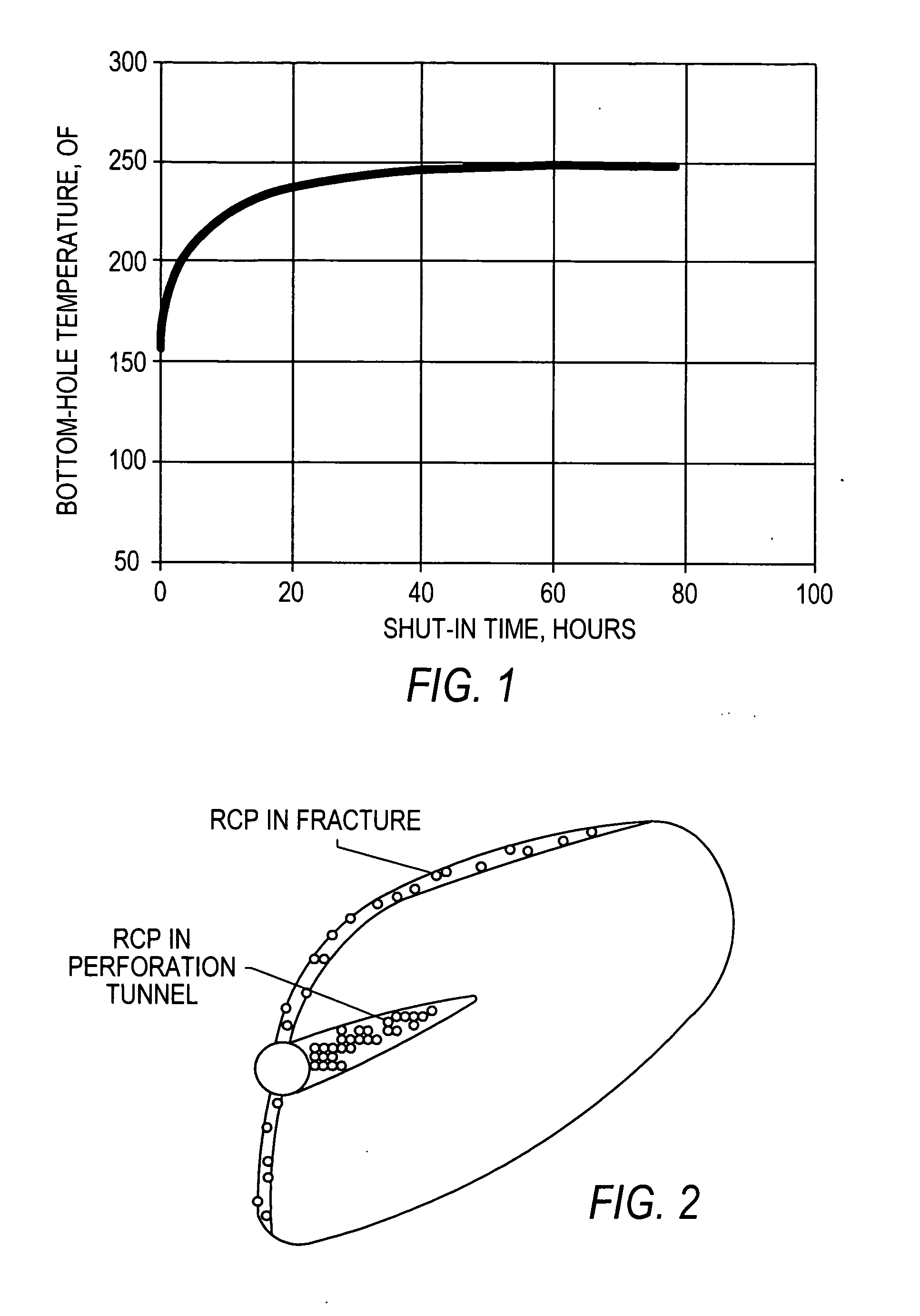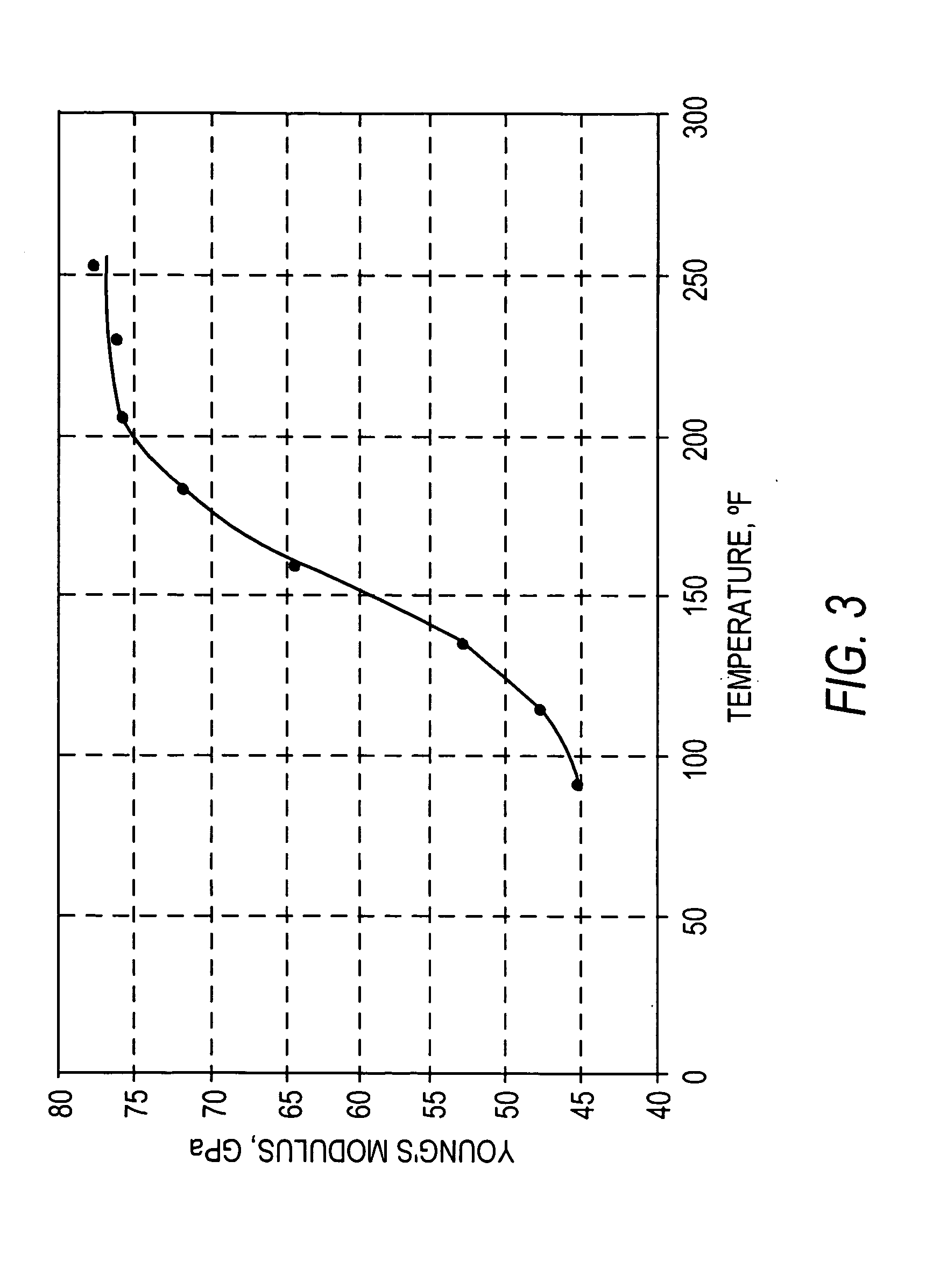Determination of well shut-in time for curing resin-coated proppant particles
a technology of resin-coated proppant and well shut-in time, which is applied in the direction of well accessories, fluid removal, survey, etc., can solve the problems of inability to achieve a complete cure for crcp, insufficient consideration of effect, and high cost of time, and achieve the effect of reducing the shut-in tim
- Summary
- Abstract
- Description
- Claims
- Application Information
AI Technical Summary
Benefits of technology
Problems solved by technology
Method used
Image
Examples
Embodiment Construction
[0063] Referring to FIG. 1, a graphic plot of the shut-in time vs. bottom-hole temperature illustrates the temperature recovery during shut-in of a well that has been subjected to introduction of one or more fracturing fluids and other treating fluids. In this instance, the temperature was reduced by about 100° F. upon introduction of pressurized liquids from the surface at ambient temperature. Approximately sixty hours was required for the bottom hole formation temperature to again reach 250° F. This temperature recovery plot is representative for a given type of reservoir rock formation at this temperature. Wells to be fractured in the vicinity of this well and in formations having similar geology, will produce similar plots of the temperature recovery profile.
[0064] As can be seen from the plot of FIG. 1, the temperature recovery curve is not linear with time, but initially rises steeply and then flattens out to approach the surrounding formation temperature almost asymptoticall...
PUM
 Login to View More
Login to View More Abstract
Description
Claims
Application Information
 Login to View More
Login to View More - R&D
- Intellectual Property
- Life Sciences
- Materials
- Tech Scout
- Unparalleled Data Quality
- Higher Quality Content
- 60% Fewer Hallucinations
Browse by: Latest US Patents, China's latest patents, Technical Efficacy Thesaurus, Application Domain, Technology Topic, Popular Technical Reports.
© 2025 PatSnap. All rights reserved.Legal|Privacy policy|Modern Slavery Act Transparency Statement|Sitemap|About US| Contact US: help@patsnap.com



